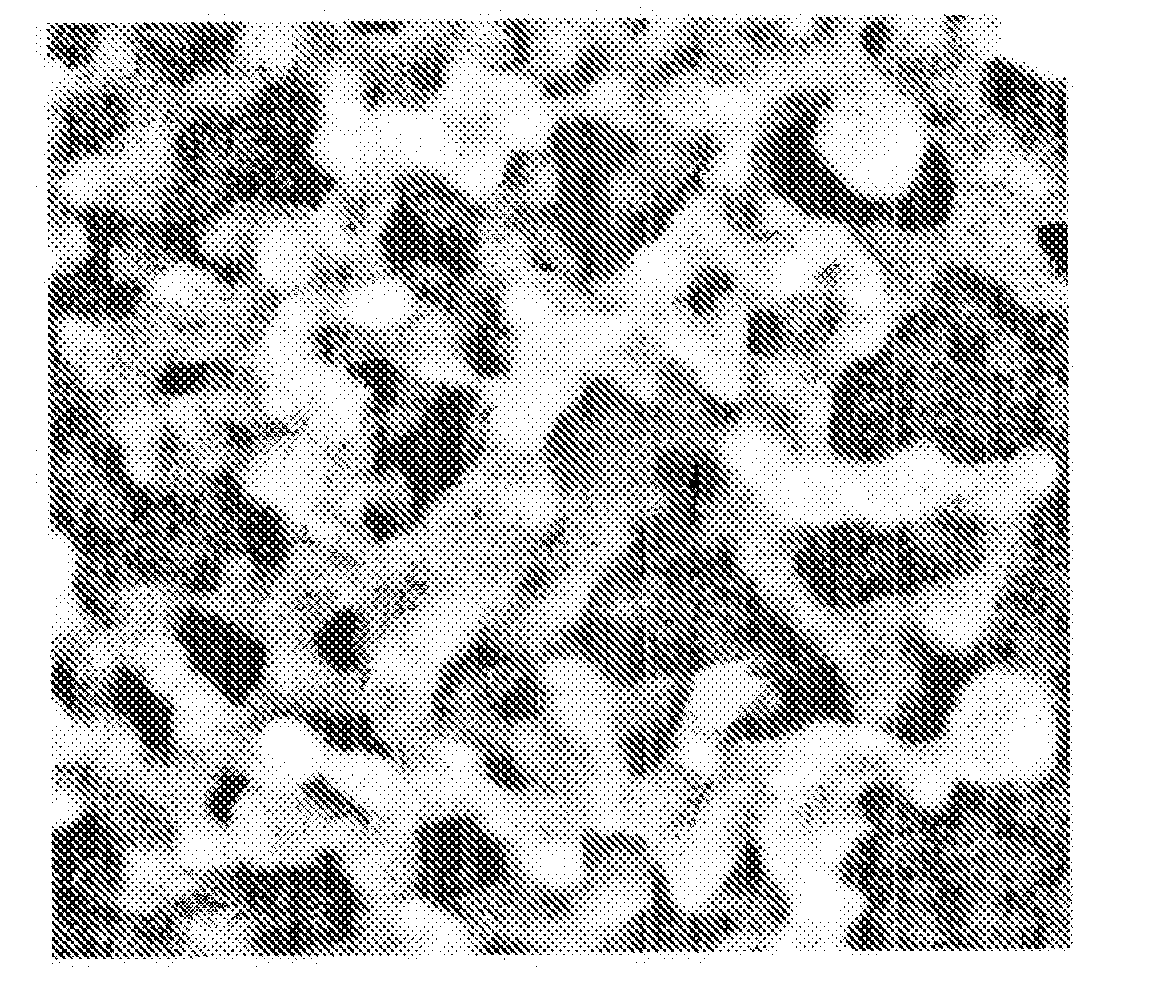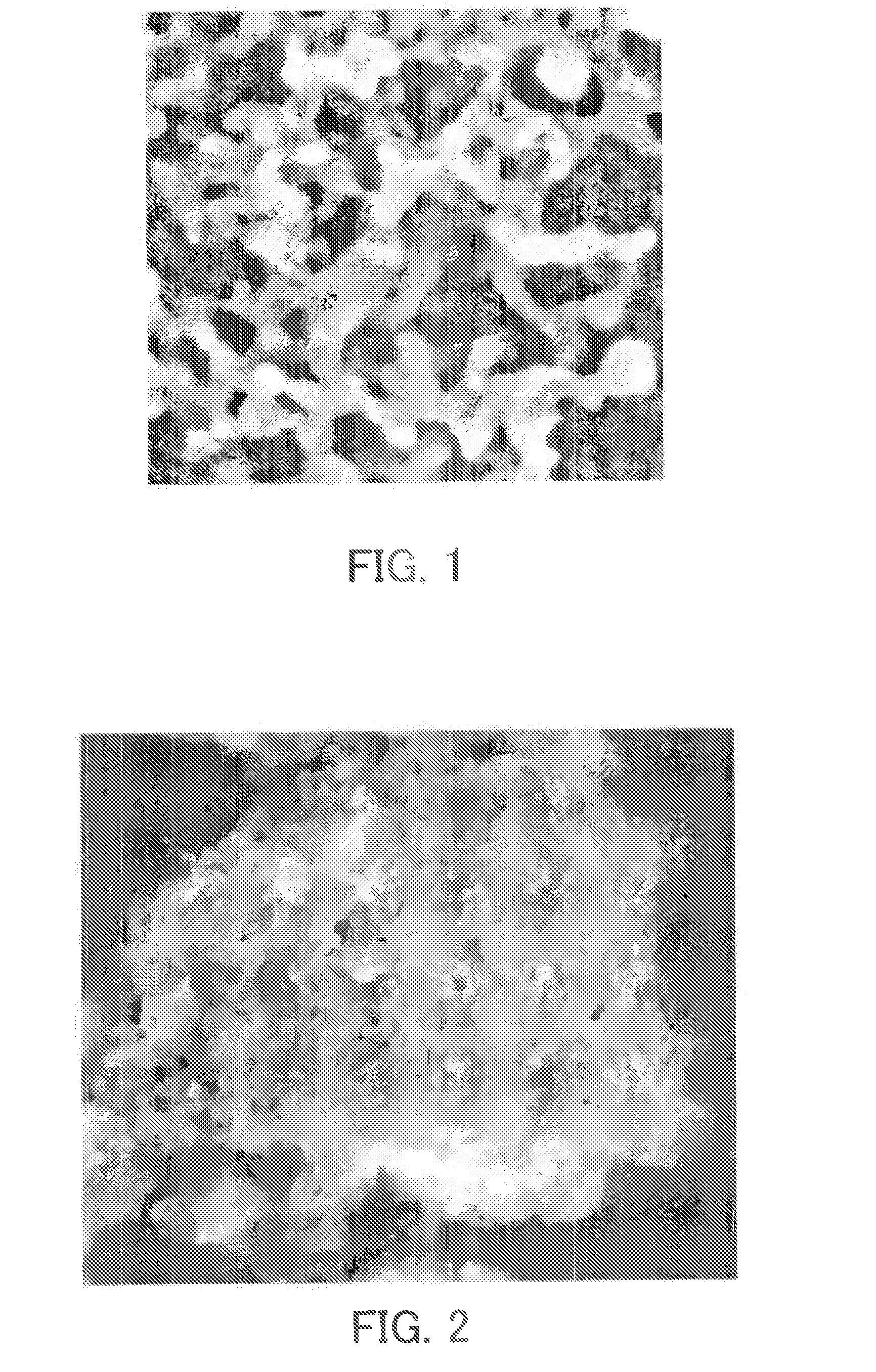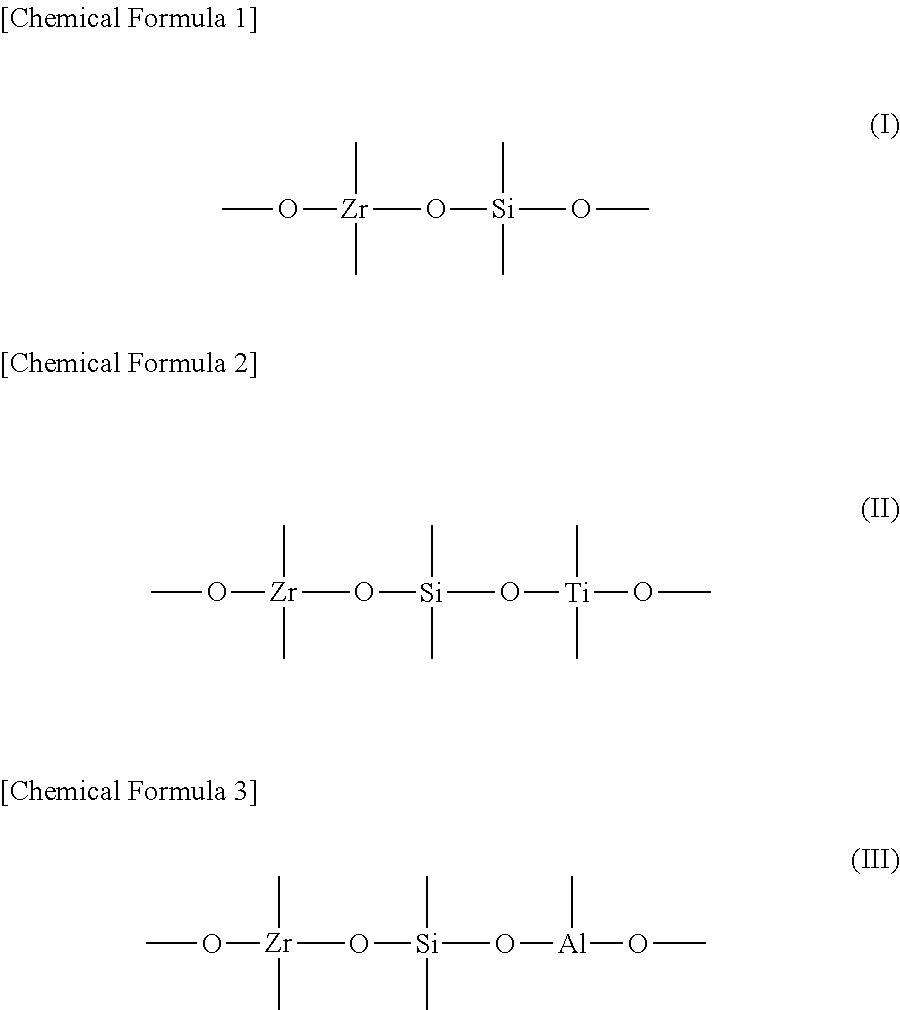Dental composition and composite resin
a composite resin and composition technology, applied in the field of dental compositions, can solve the problems of difficult to obtain satisfactory gloss, inability to retain gloss for a long time, and increase the viscosity of the resulting paste, and achieve high surface smoothness and gloss after polishing, high mechanical strength, and high gloss durability
- Summary
- Abstract
- Description
- Claims
- Application Information
AI Technical Summary
Benefits of technology
Problems solved by technology
Method used
Image
Examples
preparation example 1
Preparation of Filler B-1
[0148]250 kg of zirconium oxychloride (ZrOCl2.8H2O, manufactured by Taiyo Koko Co., Ltd.) was added to 4375 kg of pure water at a temperature of 15° C. and they were stirred to dissolve zirconium oxychloride therein.
[0149]250 L of aqueous ammonia with a concentration of 15% by weight was added slowly, under stirring, to the aqueous solution of zirconium oxychloride to cause a neutralization reaction of the zirconium oxychloride under the temperature condition of 15° C. Thus, a slurry containing the precipitate of zirconium oxide hydrate was obtained. The pH of this slurry was 8.5.
[0150]Next, this slurry was filtered, and the resulting cake-like material was washed repeatedly with pure water to remove by-products of the neutralization reaction and unreacted substances. As a result, 860 kg of a cake-like material consisting of 10% by weight of zirconium oxide hydrate in terms of ZrO2 and water was obtained.
[0151]Next, 45800 g of pure water was added to 5416 g ...
preparation example 2
Preparation of Filler B-2
[0161]The pre-dried solid substance 1B obtained in Preparation Example 1 was placed in an electric furnace at 800° C. and subjected to heat treatment for 1 hour to obtain a calcined solid material 2B. This calcined solid material 2B was ground in a vibratory ball mill for 1.5 hours. Thus, a calcined amorphous powder having an average particle size of 6.3 μm was obtained. 100 parts by weight of the calcined amorphous powder thus obtained was subjected to surface treatment with 30 parts by weight of γ-methacryloxypropyltrimethoxysilane. As a result, a filler B-2 was obtained. There was no substantial change in the average particle size of the filler B-2 before and after the surface treatment.
preparation example 3
Preparation of Filler B-3
[0162]The calcined solid material 2B obtained in Preparation Example 2 was ground in a vibratory ball mill for 24 hours. Thus, a calcined amorphous powder having an average particle size of 1.9 μm was obtained. 100 parts by weight of the calcined amorphous powder thus obtained was subjected to surface treatment with 40 parts by weight of γ-methacryloxypropyltrimethoxysilane. As a result, a filler B-3 was obtained. There was no substantial change in the average particle size of the filler B-3 before and after the surface treatment.
PUM
| Property | Measurement | Unit |
|---|---|---|
| particle size | aaaaa | aaaaa |
| weight ratio | aaaaa | aaaaa |
| particle size | aaaaa | aaaaa |
Abstract
Description
Claims
Application Information
 Login to View More
Login to View More - R&D
- Intellectual Property
- Life Sciences
- Materials
- Tech Scout
- Unparalleled Data Quality
- Higher Quality Content
- 60% Fewer Hallucinations
Browse by: Latest US Patents, China's latest patents, Technical Efficacy Thesaurus, Application Domain, Technology Topic, Popular Technical Reports.
© 2025 PatSnap. All rights reserved.Legal|Privacy policy|Modern Slavery Act Transparency Statement|Sitemap|About US| Contact US: help@patsnap.com



